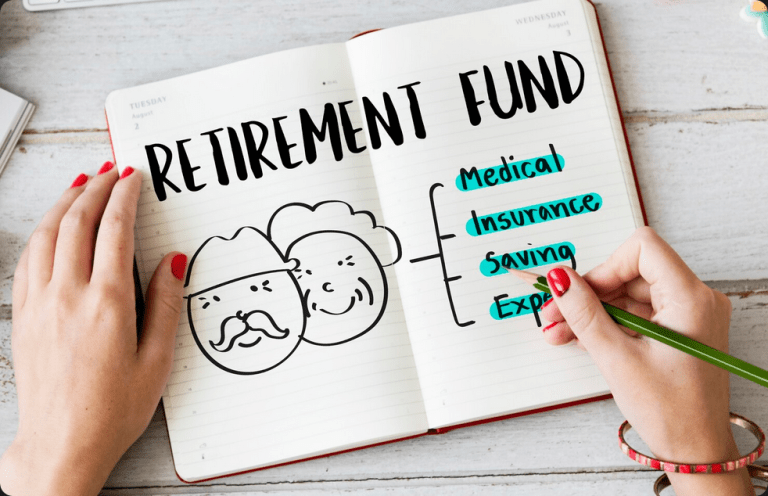The Psychology of Retirement: How to Prepare Emotionally and Financially for Life After Work
You're missing out if you don't have a complete investment plan.
Let's talk and make sure you're making every dollar work for you.
When most people imagine retirement, they picture a financial milestone: a nest egg, Social Security checks, or an investment portfolio that finally lets them step away from work. But ask any retiree, and they’ll tell you retirement is as much a psychological journey as it is a financial one.
The reality is that leaving a decades-long career can bring freedom, yes—but it can also stir up questions about identity, purpose, and daily life. Preparing financially is only half the equation. Preparing emotionally ensures you can enjoy the life you’ve worked so hard to build.
In this guide, we’ll explore the psychology of retirement—why mindset matters, how emotional readiness affects financial outcomes, and how your financial situation impacts the practical steps you can take to align your money goals with your lifestyle vision.
Retirement: More Than Just a Financial Transition
For many, work is more than a paycheck. It provides structure, purpose, social connection, and identity. When that disappears overnight, the adjustment can feel overwhelming. Psychologists often describe retirement as a major life transition, on par with marriage or parenthood.
Common challenges new retirees face include:
- Loss of Identity: “Who am I without my career?

- Unstructured Time: Struggling to create meaningful routines.

- Financial Anxiety: Even with savings, the shift from earning to withdrawing can feel unsettling.

- Social Isolation: Missing daily interactions with colleagues.

- Fear of Irrelevance: Worrying about no longer being “needed” in the same way.

Acknowledging these emotional realities is the first step toward building a holistic retirement plan that supports both well-being and financial security.
Why Emotional Readiness Affects Financial Well-Being
Psychology plays a crucial role in retirement finances, as emotions heavily influence spending habits, risk tolerance, and lifestyle choices. Some retirees overspend early on, treating retirement like a vacation, while others underspend out of fear, both risking long-term financial stability. Emotional states also impact investment decisions—anxiety may lead to overly conservative choices, while unchecked optimism can result in risky moves. Additionally, emotional well-being affects physical health and related expenses, with stress and isolation driving up costs, whereas purposeful living can promote longevity and lower medical bills. Ultimately, financial readiness alone isn’t enough; emotional readiness is key to a secure retirement.
Emotional Planning: Practical Steps to Prepare
Emotional readiness for retirement requires intentional planning alongside financial preparation. Start by visualizing your ideal lifestyle—where you’ll live, who you’ll spend time with, and what experiences matter most—to guide your financial and personal goals. Build a flexible routine that balances exercise, socializing, hobbies, and travel to maintain purpose and structure. Strengthen social connections to combat loneliness and boost well-being. Prioritize health and wellness through preventative care and fitness to enjoy a higher quality of life. Finally, explore new sources of purpose like volunteering, mentoring, or creative pursuits to fill the void left by your career and stay fulfilled.
Key steps:
- Visualize your ideal retirement lifestyle

- Build a flexible, purposeful routine

- Strengthen social connections

- Focus on health and wellness

- Explore new sources of purpose


Financial Planning with Psychology in Mind
Once your emotional vision is clear, aligning your financial goals to support it becomes essential, and this is where working with a financial advisor is invaluable. Instead of budgeting just for expenses, create a lifestyle-focused plan that funds what matters most—whether travel, philanthropy, or healthcare. Choose income streams that fit your personality, balancing guaranteed and variable sources to reduce stress. Manage withdrawal anxiety with strategies like the 4% rule or bucket approaches to avoid under spending. Protect against longevity risk with tools such as deferred annuities or long-term care insurance to ensure your savings last. A trusted advisor helps tailor a plan that supports both your emotional well-being and financial security.
Key points:
- Budget for lifestyle, not just expenses

- Create income streams that match your comfort level

- Use strategies to manage withdrawal anxiety

- Plan for longevity risk with appropriate tools

- Coordinate with a trusted financial advisor

Why This Matters Now
As retirement evolves, the old formula—work, save, stop—doesn’t capture the complexity of modern life and maintaining your current lifestyle. Longer lifespans, changing social structures, and rising healthcare costs mean that retirement is no longer a purely financial exercise. It’s a holistic transition.
By preparing both emotionally and financially, retirees can enjoy not just the security of a well-funded future but the joy of a fulfilling one.
Final Thoughts
The psychology of retirement reminds us that having enough money alone doesn’t guarantee happiness. What matters is how your financial resources support the life you want to live. Identity, purpose, relationships, and well-being are just as important as your portfolio balance.
By preparing emotionally, building purposeful routines, and aligning money strategies with lifestyle goals, you can step into retirement with confidence, clarity, and joy.
At Goldstone Financial Group, we believe retirement planning isn’t just about numbers—it’s about people. Our Retirement Roadmap process blends financial expertise with a deep understanding of your personal goals, so your money supports the life you truly want.
Ready to explore how emotional and financial planning work together for a successful retirement? Schedule a complimentary consultation with our advisors today.